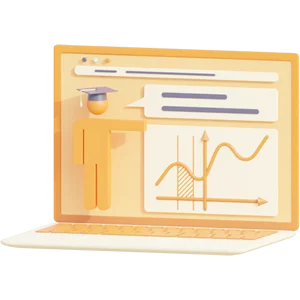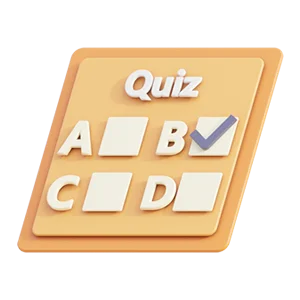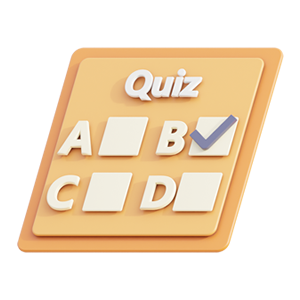ADVANCED PATHOPHYSIOLOGY FINAL EXAM WITH COMPLETE SOLUTIONS
ADVANCED PATHOPHYSIOLOGY FINAL EXAM WITH COMPLETE SOLUTIONS
What is the most common cause of Down syndrome?
a. Paternal nondisjunction
b. Maternal translocations
c. Maternal nondisjunction
d. Paternal translocation - C
What does activation of the classical pathway begin with? a. Viruses
b. Antigen-antibody complexes c. Mast cells
d. Macrophages - B.
Activation of the classical pathway begins only with the activation of protein C1 and is
preceded by the formation of a complex between an antigen and an antibody to form
an antigen-antibody complex (immune complex). Infection with a virus can lead to the
start of the inflammatory process, but is not the specific activation factor. Mast cells
release the contents of their granules to initiate synthesis of other mediators of
inflammation among other actions. Macrophages are one cell type involved in
phagocytosis.
In the coagulation (clotting) cascade, the intrinsic and the extrinsic pathways
converge at which factor?
a. XII
b. VII
c. X
d. V - C. The coagulation cascade consists of the extrinsic and intrinsic pathways that
converge only at factor X.
What effect does the process of histamine binding to the histamine-2 (H2) receptor
have on inflammation?
a. Inhibition
b. Activation
c. Acceleration
d. Termination - A. Binding histamine to the H2 receptor is generally antiinflammatory
because it results in the suppression of leukocyte function. Binding to H2 receptors
does not cause activation, acceleration, or termination of the inflammatory process.
Lead poisoning affects the nervous system by
A. Interfering with the function of neurotransmitters
B. Inhibiting the production of myelin around nerves
C. Increasing the resting membrane potential
D. Altering the transport of potassium into the nerves - A
Water movement between the intracellular fluid (ICF) compartment and the
extracellular fluid (ECF) compartment is primarily a function of:
A. Osmotic Forces
B. Plasma Oncotic Pressure
C. Antidiuretic hormone
D. Hydrostatic forces - A
Two thirds of the body's water is found in its
a. Interstitial fluid spaces
b. Vascular system
c. Intracellular fluid compartments
d. Intraocular fluids - C
A patient has a history of excessive use of magnesium-containing antacids and
aluminum-containing antacids. What lab value does the healthcare professional
correlate to this behavior?
a. Magnesium 1.8 mg/dL
b. Phosphate 1.9 mg/dL
c. Sodium 149 mEq/L
d. Potassium 2.5 mEq/L - B
A healthcare professional is caring for four patients. Which patient should the
professional assess for hyperkalemia?
a. Hyperparathyroidism
b. Vomiting
c. Renal failure
d. Hyperaldosteronism - C
A healthcare professional is caring for four patients. Which patient should the
professional assess for hypermagnesemia as a priority? a. Hepatitis
b. Renal failure
c. Trauma to the hypothalamus d. Pancreatitis - B
Cystic fibrosis is caused by what type of gene?
a. X-linked dominant
b. X-linked recessive
c. Autosomal dominant
d. Autosomal recessive - D
People diagnosed with neurofibromatosis have varying degrees of the condition
because of which genetic principle?
a. Penetrance
b. Expressivity
c. Dominance
d. Recessiveness - B
Frequently when H1 and H2 receptors are located on the same cells, they act in what
fashion?
a. Synergistically
b. Additively
c. Antagonistically
d. Agonistically - C. Both types of receptors are distributed among many different
cells and are often present on the same cells and may act in an antagonistic fashion.
For instance, neutrophils express both types of receptors, with stimulation of H1
receptors resulting in the augmentation of neutrophil chemotaxis and H2 stimulation
resulting in its inhibition. The two receptors do not act synergistically, additively, or
agonistically.
What is the inflammatory effect of nitric oxide (NO)?
a. Increases capillary permeability, and causes pain b. Increases neutrophil
chemotaxis and platelet aggregation
c. Causes smooth muscle contraction and fever
d. Decreases mast cell function, and decreases platelet aggregation - D. Effects of NO
on inflammation include vasodilation by inducing relaxation of vascular smooth
muscle, a response that is local and short-lived, and by suppressing mast cell
function, as well as platelet adhesion and aggregation. NO does not increase capillary
permeability and cause pain, increase neutrophil chemotaxis and platelet
aggregation, or cause smooth muscle contraction and fever.
Preview document (3 of 32 pages)
Knoowy benefits
$ 37.89
 Money back guarantee
Money back guarantee
 Documents can be downloaded immediately
Documents can be downloaded immediately
 $0.50 discount when paying with balance
$0.50 discount when paying with balance
-
 Receive free quiz questions with document
Receive free quiz questions with document

Specifications
- School: Walden University
- Course: NURSING
Document
- Section: Examinations
- Made on: 05-11-2024
- Type: .pdf
- Pages: 32
- Language: English
Tags
Seller
Earn from your summaries?
Subjects of NURSING - Walden University
More NURSING ›advanced pathophysiology advanced pharmacology ati comprehensive predictor ati exit ati exit exam 2024 version comprehensive retake test ati fundamentals proctored ati fundamentals proctored exam ati rn fundamentals biology computer science computer studies education fundamentals of nursing health care health care/ nursing hesi a2 hesi rn exit exam mathematics medical-surgical nursing nrnp 6675 nursing nursing/health care nutrition pharmacology psychotherapy with multiple modalities
 Deal: get 10% off when you purchase 3 or more items!
Deal: get 10% off when you purchase 3 or more items!
Deal: get 10% off when you purchase 3 or more items!









